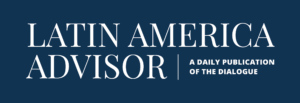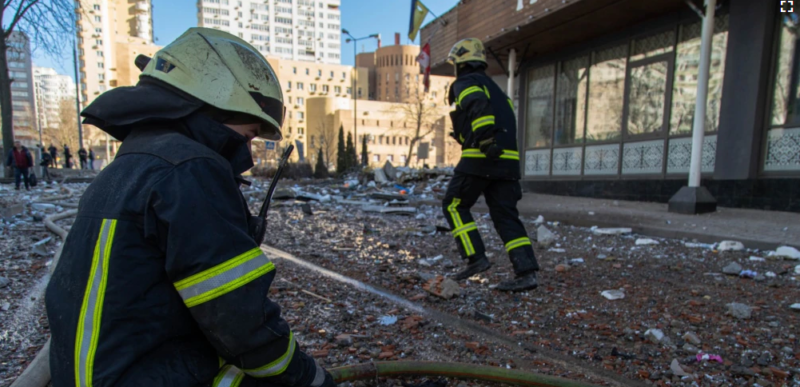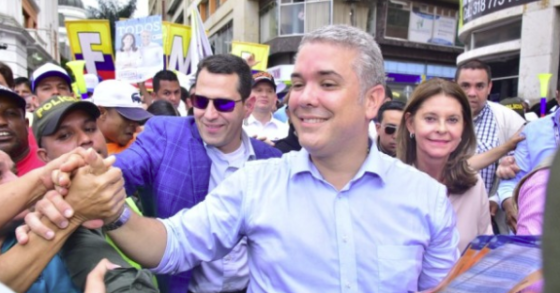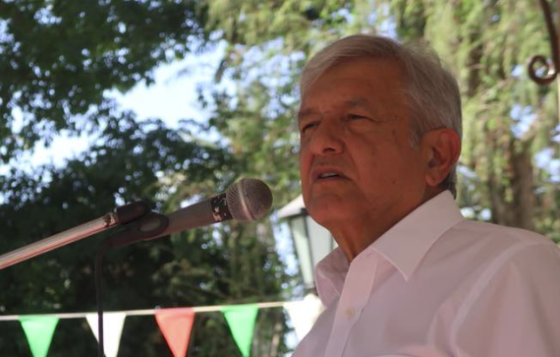
Latin America’s Unusual Leadership Vacuum
This year’s “electoral supercycle” could ignite a race to succeed Washington and Caracas as the hemisphere’s big players.
A Daily Publication of The Dialogue
The war in Ukraine could devastate the economies of some developing nations, including more than a dozen in Latin America and the Caribbean, a United Nations task force said on April 13. The war is “supercharging” crises involving food, energy and finance in countries that were already struggling because of the Covid-19 pandemic and rising global interest rates, the report said. What Latin American and Caribbean economies will be most affected by the war in Ukraine, and what factors will be most damaging to them? To what extent is the war in Ukraine slowing economic growth in Latin America as compared to central bank tightening? What policies should commodity-exporting countries of the region put in place in order to capitalize on a potential windfall in revenue while at the same time addressing hunger and inflation?
Eric Parrado, chief economist and general manager of the Research Department at the Inter-American Development Bank: “Economic growth in Latin America and the Caribbean was stronger than expected in 2021, but more needs to happen to maintain that momentum into 2022, and we are already starting to see signs of waning. The surge in commodity prices due to the war between Russia and Ukraine will provide a boost to exporters, while imposing significant costs on commodity importers and pushing up inflation across countries. The ongoing conflict, together with advanced economies moving more aggressively to curtail inflation, carries significant risks for the region. Volatility in financial markets could depress investment and bring down growth. As minor fixes are unlikely to result in notable benefits, governments should take urgent measures to mitigate risks and boost inclusive growth, together with ambitious policy reforms. For all the difficulties created by the pandemic, the war in Ukraine, and the risks and challenges ahead, the crisis has also opened a window of opportunity to implement fundamental changes that improve well-being. The region needs new fiscal and labor market architectures. In addition, the war is generating a series of adjustments in international trade. Fortunately, the region’s direct trade links with Russia are relatively small, with a few exceptions, such as meat exports from Paraguay, fruit from Ecuador and fertilizers imports from Russia. In this context, the region is in a favorable position to help mitigate the harmful impacts of war in the world, with Latin America in a position to replace upwards of $150 billion in Ukrainian and Russian exports to global markets. The IDB’s leadership is actively working to expand new opportunities and strengthen cooperation with like-minded business partners in the United States, Europe and Asia to beat forecasts. Policymakers should seize the new realities window of opportunity provided by the crisis to improve the outlook for the region.”
Ernesto Revilla, head of Latin American economics at Citi: “The Latin American idiom ‘we were few and the grandmother gave birth’ applies to global shocks affecting our region: just what we needed. Each shock of the last two years—the pandemic, the slowdown in China, a Fed hiking cycle and now the war in Ukraine—if faced by itself would have been challenging enough. Nevertheless, we are facing them all at once. The resulting impact is stagflationary: growth forecasts for the region are falling while inflation forecasts increase. There are two immediate concerns. First, the policy response. Should monetary and fiscal policy focus on the diminished growth (high unemployment) problem, or on the inflationary one? There is usually a tradeoff between the two. In Latin America, central banks have continued hiking rates to fight inflation in spite of weak economies, as they cannot risk unanchored expectations. This has opened the door for further fiscal spending to try to smooth out the impact of increasing food and energy prices to consumers. This will add to fiscal challenges down the road. Second, stagflation breeds political discontent and unrest. Latin America can hardly afford further political uncertainty. Ukraine and Russia are far away geographically and commercially from Latin America (there is little direct trade), but the war’s impact will be felt mostly through high commodity prices and a more hawkish Fed. Commodity importers and economies with weaker fundamentals are at higher risk. Commodity exporters should use the transitory windfalls to support more vulnerable populations and strengthen buffers for the eventual volatility.”
Aida Caldera Sanchez, head of division for the OECD Economics Department: “The world has felt the impact of Russia’s invasion of Ukraine through slower growth and higher prices, including in Latin America and the Caribbean (LAC), even if the region has fewer direct connections to Russia and Ukraine than other regions. Some countries in the region (for example, oil-exporting Colombia and Venezuela) could benefit from rising commodity prices. However, accelerating inflation, slower global growth and depreciating currencies could offset some of the commodity price benefit. The main effect of the war for LAC’s economies thus far is through higher inflation and policy tightening. The war has exacerbated inflationary pressures that were already present in many economies, by increasing energy and food prices. Inflation rapidly increased in Latin America’s largest economies in 2021, driven by global factors, including higher commodity and import prices, and in some cases domestic factors, such as a strong recovery of demand. This increase in inflation that was initially driven by surging food and energy prices became broader over time, expanding to other elements in the consumer basket. Central banks in the largest economies (Brazil, Chile, Colombia, Mexico and Peru) swiftly tightened monetary policy when inflation began rising in 2021. This tightening is expected to continue over the coming months to bring inflation back to target. Higher inflation usually weighs more on the poorest who lack savings to smooth their consumption over time. Also, food and energy weigh more on the consumption basket of the lowest income households. This could lead to a widening of already high income inequalities in the region and social discontent. Targeted social protection measures such as cash transfers, food or in-kind transfers, already used in some countries in the region during the pandemic, could be an efficient instrument to mitigate the inflation impact and improve fairness.”
William F. Maloney, chief economist for the Latin America and Caribbean Region at The World Bank: “Even if the war ends tomorrow, Latin America and the Caribbean will continue to be hit by shock waves propagated through multiple channels that have already led us to lower growth forecasts by 0.4 percent for 2022. Oil and gas supplies will remain restricted, and the fact that futures prices do not foresee more dramatic price hikes likely reflects China’s Covid-induced slowdown, which will also moderate copper and other metals’ price rises. The fall in grain exports from Ukraine and Russia has triggered global food shortages that may offer opportunities to regional grain producers but may also worsen as shortfalls in fertilizer exports from Russia—particularly to Brazil in our region—dampen future harvests. The Caribbean, which is particularly dependent on imported food and energy, will be acutely affected, but protests against higher energy prices in Peru suggest that more generally, regional governments may again need to ramp up the targeted transfer programs of the pandemic era, but in a context of much reduced fiscal space. The higher advanced country interest rates to address the same inflationary pressures will both complicate debt servicing and lead local monetary authorities to take restrictive measures to defend their currencies, potentially leading to stagflationary scenarios. Over the longer term, the emerging Western wariness around China and its closer relations with Russia may undermine the global trading system but also offer LAC opportunities for renewed insertion in global value chains. Further, concerns about energy security will intensify the search for renewable sources in which, as our recent semi-annual report discussed, LAC has a tremendous green comparative advantage.”
Adriana Arreaza Coll, director of macroeconomic studies at CAF: “Latin America and the Caribbean registered one of the most severe output contractions globally in 2020, causing poverty and inequality to rise to levels not seen in more than a decade. Following the solid rebound in 2021, we expect a significant slowdown in growth in LAC this year. The war in Ukraine poses additional risks to the regional recovery. The shock will hit net importers in Central America and the Caribbean, but the impact of soaring commodity prices on LAC countries and financial tensions will be transmitted through three main channels. First is the effect of higher commodity prices on external accounts. The outcome will vary depending on whether countries are net exporters or importers of energy and food. Net exporters in South America will benefit from more favorable terms of trade, improving current account balances and generating additional revenues for the treasury that may stimulate demand, growth and employment. The impact on growth may be more moderate because external financing needs are narrower and international reserves are higher, so the need to adjust domestic demand is lower. The second transmission channel is international financial markets. The war-generated confidence shock in markets adds to the normalization of monetary policies in advanced economies. Regarding sovereign spreads and currencies in Latin America, we see capital flows into the region as some investors shift away from the countries in conflict to other emerging economies. The situation may change if the conflict escalates, generating a more pronounced flight to safe assets. Finally, there is inflation. The rise in energy and food prices reduces the purchasing power of households, doing nothing to reverse rising poverty and inequality in LAC. The shock mounts on accumulated inflationary pressures that had already prompted central banks across LAC to increase interest rates since last year."
 The Latin America Advisor features Q&A from leaders in politics, economics, and finance every business day. It is available to members of the Dialogue’s Corporate Program and others by subscription.
The Latin America Advisor features Q&A from leaders in politics, economics, and finance every business day. It is available to members of the Dialogue’s Corporate Program and others by subscription.
This year’s “electoral supercycle” could ignite a race to succeed Washington and Caracas as the hemisphere’s big players.
Iván Duque, a conservative former senator, on Sunday won Colombia’s presidential runoff election. What does it mean for the country?
Mexicans go to the polls on Sunday, July 1, for the country’s presidential, legislative and local elections. What can we expect?
 Photo: Voice of America
Photo: Voice of America

